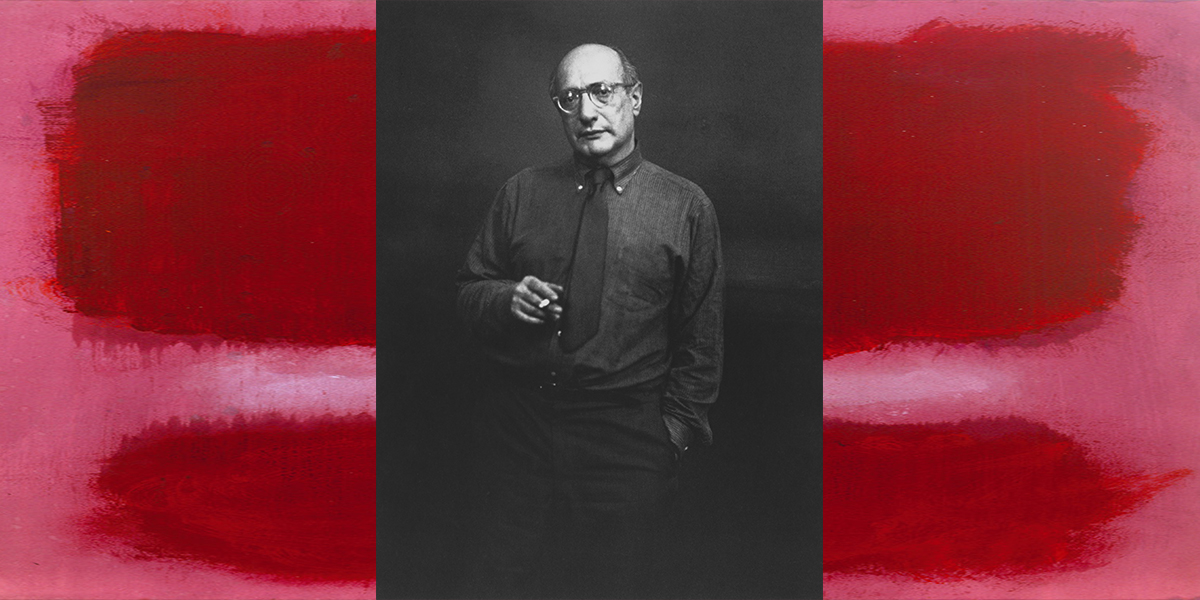Pace inaugurates their new London gallery with Mark Rothko 1968: Clearing Away, an exhibition of rarely seen works on paper from the final years of Mark Rothko’s life.
It was almost certainly his experience with the paradoxical nature of paper—absorbing and reacting at the same time that set him on his course to the great clearing away that his life’s work represents.” — Dore Ashton
The new gallery in Hanover Square (housed in the former Blain|Southern Gallery) will be the first in the United Kingdom that is solely dedicated to the artist’s extraordinary paper-based practice. The exhibition will be accompanied by a fully illustrated catalogue featuring an introduction by Christopher Rothko and a new essay by art historian Eleanor Nairne, curator at the Barbican Art Gallery.

Mark Rothko 1968: Clearing Away brings together critical paintings from Rothko’s renowned body of work made in the late 1960s, a significant and prolific period in the artist’s life. In the wake of a particularly difficult bout of ill health and a tumultuous time in his personal life, Rothko was forced to reduce the scale of his practice from his signature monumental canvas to more intimately sized paper. Despite physical limitations, Rothko worked feverishly with a renewed enthusiasm for colour, delighted by the effect of acrylic paint, which he had newly discovered.
These jewel-like paintings encourage intimate examination, offering a meditative, pulsating quality that envelops viewers within their frame. Rendered in various pigments, from the deepest blue to riotous pink, Rothko’s manipulation of colour and light is masterful. Central to his iconic sectional compositions is Rothko’s unique
Rothko creates visual tension through rectangular forms that are at once contained yet expansive. Rothko’s expert layering and feathering of colour creates luminous illusion in nite space, yet the painting’s edge maintains focus within the colourfeld.
Significantly influenced by the writings of Nietzsche, who advocated for the importance of an artist’s freedom from the physical world to arrive at ideas of eternity and the mythic—Rothko explained that his ultimate ambition was ‘the elimination of all obstacles between the painter and the idea, and between the idea and the observer.’ The paintings borne from this singular moment in the artist’s life represent the realisation of this lifelong endeavour, showcasing his enduring will to clear away all ties to representation and refine his vision of boundlessness.
The comparatively small scale of these works allows viewers an intimate encounter, fulfilling Rothko’s desire to collapse boundaries between artist and viewer. Rothko playfully suggested that the optimal distance from which to engage with these works was 18 inches away, mirroring his proximity to the paintings as he made them. This exhibition offers viewers a rare glimpse into the artist’s more spontaneous practice as he experimented with colour and medium, unencumbered by the demands of large-scale canvases.
This exhibition coincides with Tate Britain’s landmark display of Rothko’s 1958 Seagram Murals in dialogue with paintings by J.M.W. Turner. The suite of large-scale paintings originally intended for the Four Seasons Restaurant in New York was given to the Tate in 1969, arriving in London in 1970. This new display marks 50 years since the iconic paintings came to London, fulfilling Rothko’s wish to hang his work beside the British painter he deeply admired.
Mark Rothko 1968: Clearing Away will be the first exhibition in Pace’s new London gallery on Hanover Square. The opening programme will also feature Liquid a Place, a collaborative performance and sculptural installation by Torkwase Dyson presented by Pace Live.
Pace’s new London gallery was designed by architect Jamie Fobert Architects. Fobert enjoys a longstanding relationship with Pace, having been involved with the original gallery on Lexington Street in 2011. For Hanover Square, Fobert will completely transform the interior architecture of the existing building to incorporate flexible galleries across two floors. The levels will be connected by a feature staircase rendered in black steel, giving the impression of a fully integrated space. The new modular layout will allow for dynamic presentations and accommodate works ranging from intimate to monumental in scale.
Mark Rothko (b. 1903, Dvinsk, Russia; d. 1970, New York), a pioneer of the New York School, is predominantly recognised for his mesmerising Colorfield paintings of immense scale produced between 1949 and 1970, which followed his works of figurative and biomorphic imagery. His stylistic explorations resulted in many works on paper and canvas, with layered transparencies of vibrant pigments and earth tones culminating in luminous and ethereal soft-edged compositions. His approach to painting emphasised an experimental engagement with process in order to fully articulate a universal expression. Rothko’s artistic philosophies held that painting was a deeply psychological and spiritual experience through which basic human emotions could be communicated.
Mark Rothko 1968: Clearing Away October 8 – November 13, 2021, 5 Hanover Square London

